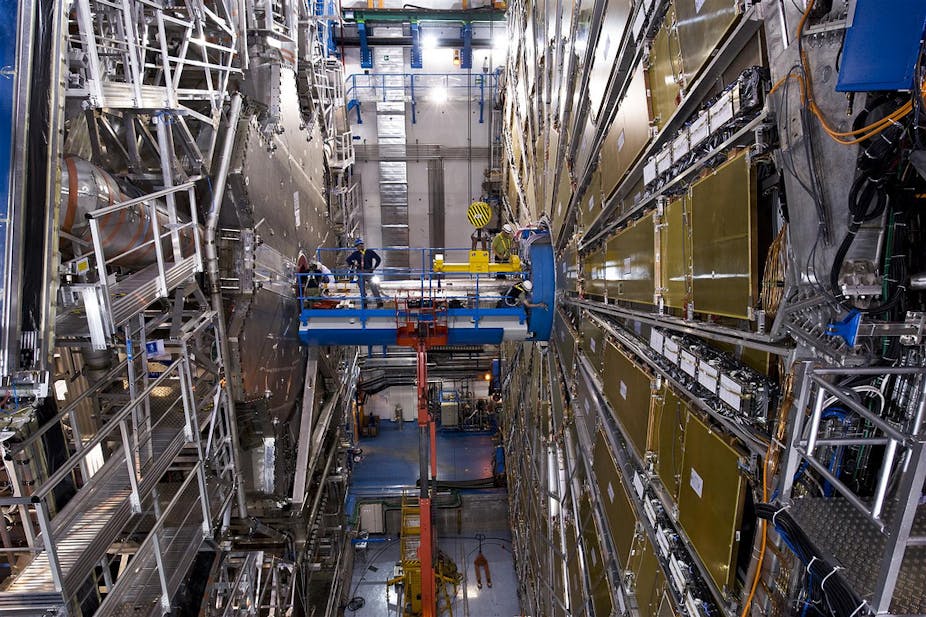When you stand in the 27km-long Large Hadron Collider tunnel deep under Switzerland and France it looks as if the chain of blue magnets simply stretches off to infinity. So when people talk about putting particle accelerators in hospital basements to treat cancer, there is understandably some reticence as to their size and cost.
Despite this, proton therapy is big business. According to the Particle Therapy Co-Operative Group, by 2012 more than 100,000 patients had been treated with charged particles worldwide. Of those, roughly 94,000 were treated with protons, which are positively charged subatomic particles.
Firing protons at the body
In 1944, the physicist R R Wilson published a paper titled “Radiological use of fast protons” in a medical journal. The paper described how new high-energy particle accelerators could provide protons or other light ions that would penetrate deep enough into the body to do something useful; say, kill a cancerous tumour.
When treating any cancer with radiation the aim is to increase the dose reaching cancerous cells while sparing as much of the healthy tissue as possible. For tumours deep inside the body or in the brain this can become particularly difficult. Such selectivity is also crucial in many cases of cancer in young children who are still developing.
Protons are good candidates for such selectivity because they deposit low-dose radiation when travelling through the body, but a heavy dose when they are eventually stopped. The place where the protons stop inside the body can be determined by knowing the energy at which they were fired from the particle accelerator. This allows fine control over where most of the radiation dose is delivered.
In typical X-ray radiotherapy, the dose of radiation is actually greatest just under the skin and then drops off with depth. In proton therapy, doctors can choose where the dosage is heaviest. If you want a higher dose inside the body, use a heavier ion, such as helium or carbon, which will be able to deposit more energy inside the body, rather than on the surface.
Proof is in the proton
Surprisingly, there are no proper randomised clinical trials that “prove” proton therapy is superior to X-ray radiotherapy. In fact, ethical considerations may rule them out. If we already know from the physics that proton therapy is superior, then it could be considered unethical to offer patients conventional radiotherapy who are being used as control.
Previous developments in conventional radiotherapy, such as the move from analogue X-rays to digital, or from hand-calculated treatment plans to simulation codes were simply approved and adopted immediately. Many centres offering this treatment consider it as just another type of radiation to be used in radiotherapy, not an entirely new treatment.
In practice it turns out to be a little more challenging than the basic physics leads us to believe. This is one reason why the Particle Therapy Cancer Research Institute in Oxford was created, which brings together physicists, IT experts, biologists and oncologists to try and address some key questions in the field.
Physicists fighting cancer
Every cancer is different. So for any given cancer, we need to be able to determine the most effective combination of therapies which are needed to achieve a cure including surgery, conventional radiotherapy, chemotherapy, gene therapies and methods like proton or ion therapy.
With the current trend toward using heavier ions, such as carbon, more research is needed to understand whether they provide a real clinical benefit and also to ascertain which ion is the best compromise once all the complexities are taken into account.
In the meantime, physicists are contributing to proton and ion therapy through the development of new accelerators and new imaging technologies to help oncologists deliver the best treatment possible.
A version of this article was first published on Physics Focus.

